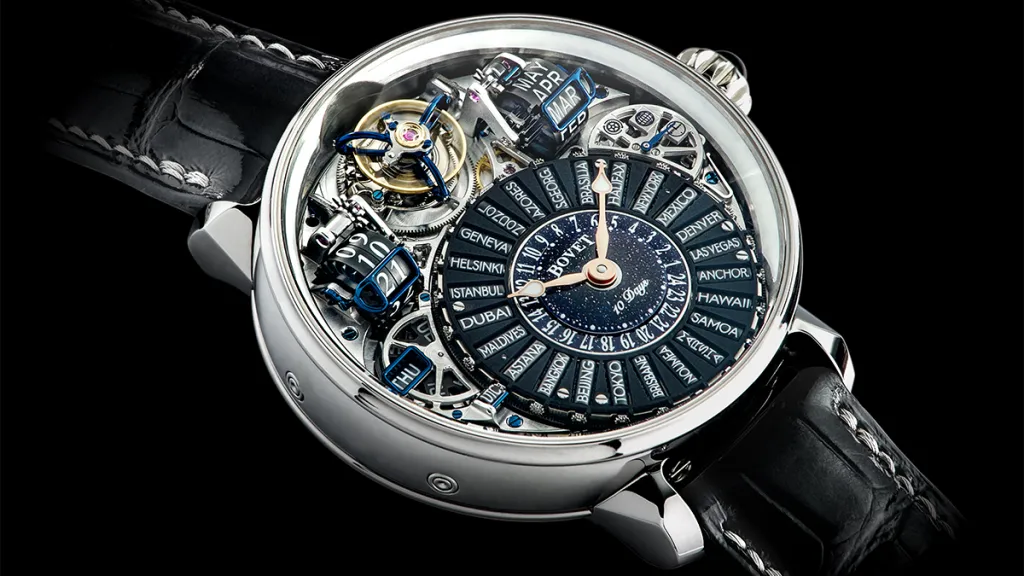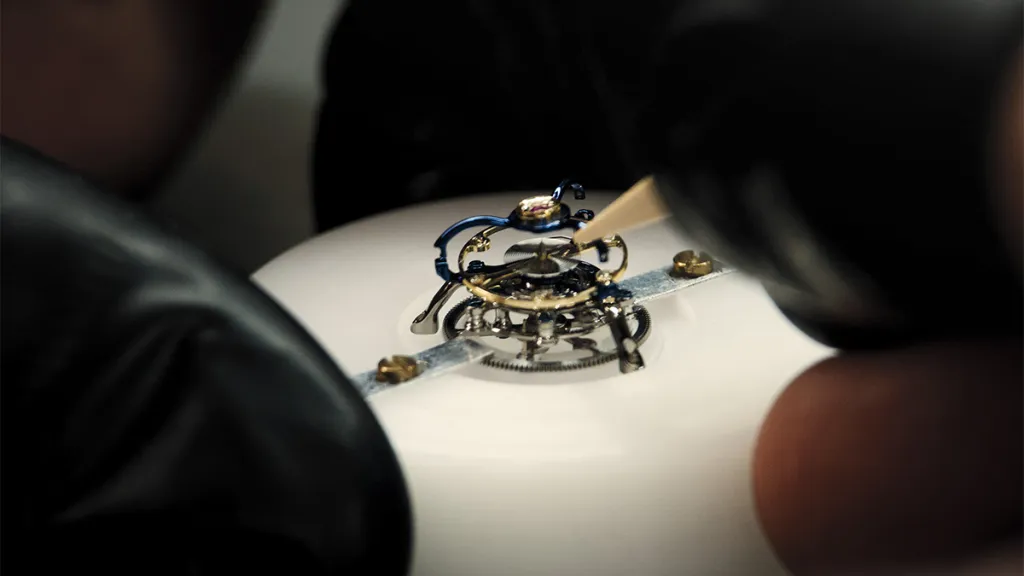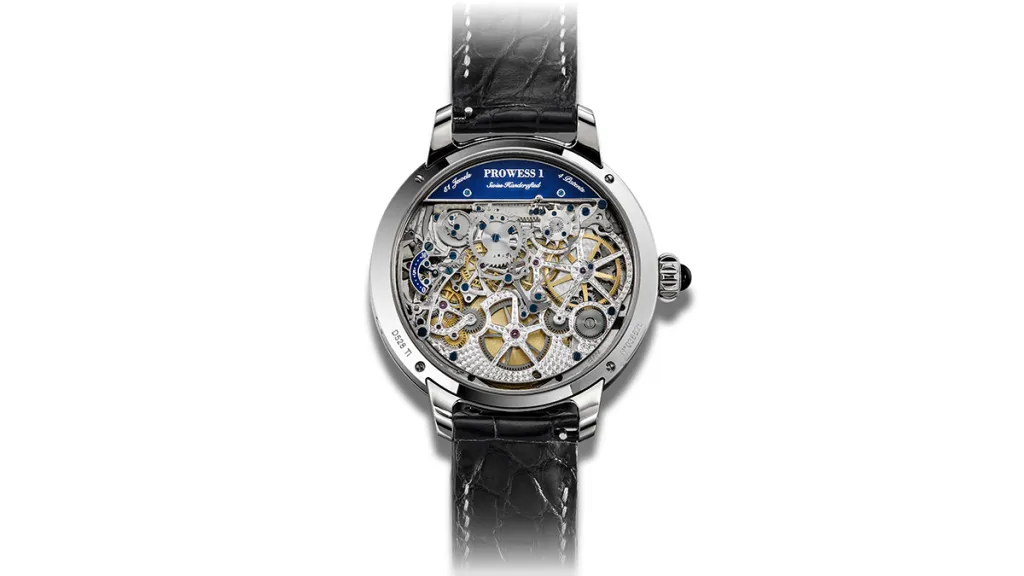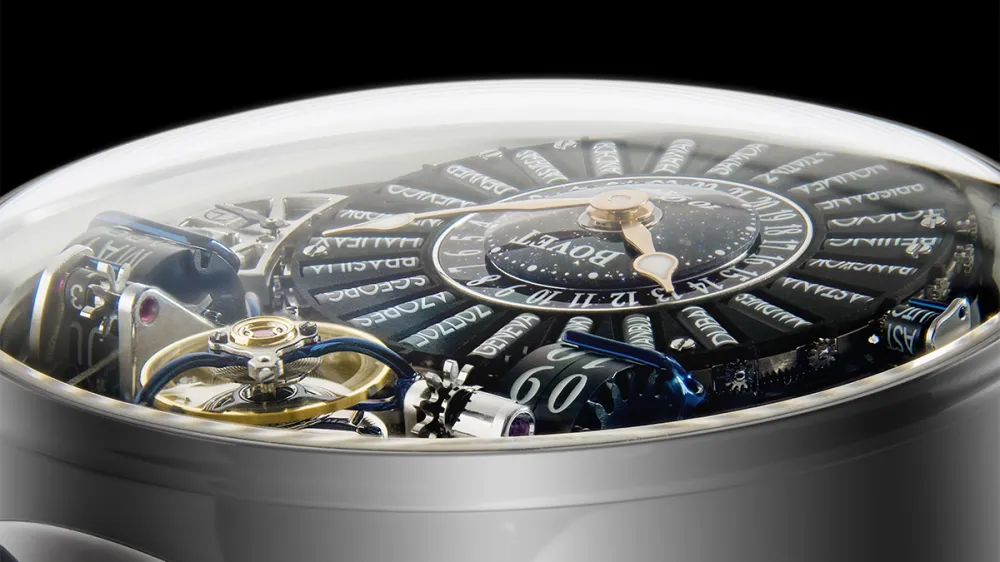The Swiss watchmaker’s new Récital 28 Prowess 1 takes on one of horology’s biggest head-scratchers.
Before the 19th century, when the steamship and the railroad greatly expanded the capacity for long-distance transit, little attention was paid to tracking time zones on the wrist. But in the 1930s, when the world-time complication came to market, a new standard was set for traveler’s watches—suddenly, with just a glance, one could see the hour and minute in all time zones simultaneously.
The only problem? The international community couldn’t quite agree on a single, universal time-zone system. It still can’t. In the U.S., a handful of states completely ignore daylight saving time (DST), and certain countries near the equator similarly have no use for it; there’s persistent talk about jettisoning the system altogether.

COURTESY OF BOVET
For watchmakers, this lack of consensus makes developing a world-time complication that can account for DST a wildly troublesome proposition. But a breakthrough by Bovet promises to change all that: Meet the Récital 28 Prowess 1, a wristwatch whose operation—entirely mechanical—solves the horological head-scratcher. Housed in a 46.3 mm case, this remarkable feat of micro-engineering allows the wearer to account for not only 24 global time zones but also for Coordinated Universal Time (UTC), American summertime (AST), European and American summertime (EAS), and European wintertime (EWT). And then, as if this system didn’t present enough of a development challenge, Bovet decided to combine it with both a flying tourbillon and a perpetual-calendar complication.

COURTESY OF BOVET
Within a large subdial toward the bottom of the sizable dial, a system of rollers displays 24 city names via a button set within the crown; this system can be set to UTC, AST, EAS, or EWT, allowing the wearer to account for the differences of time around the world owing to daylight saving. In concert, four rolling displays show the day, date, month, and leap year in white text set against a black background, all of which reset automatically at the end of each month. Meanwhile, a flying tourbillon is positioned at 12 o’clock; the featherweight component weighs just 0.35 grams despite being housed in a cage composed of 62 separate parts. The result is a machine more akin to a rudimentary computer than a wristwatch.
Except, of course, aesthetically, by which measure the Prowess 1 could be considered a work of art. The inner aventurine dial, calendar displays, and flying tourbillon are surrounded by visible movement components, which constitute just a handful of the 744 parts that make up the in-house caliber R28-70-00X with its 10 days of power reserve. Flip the watch over, and a captivating display of haute horlogerie is revealed: Côtes de Genève, perlage, and other artisanal techniques provide a visual feast. As one would expect, the timepiece is exceedingly time-consuming to produce; as such, the Prowess 1 will be limited to just eight pieces per year offered in 18-karat red gold, 950 platinum, and grade 5 titanium.

COURTESY OF BOVET
Bovet, of course, is no stranger to the development of such complicated wonders: Its catalog includes dual-time, triple-time-zone, and world timers such as the Orbus Mundi, set entirely via the crown. The Prowess 1 builds upon that legacy. Following the brand’s GPHG Mechanical Exception prize win in 2020 for its Récital 26 Brainstorm Chapter Two, the Prowess 1 seems like a shoo-in for a repeat in 2024.
The pursuit of complicated mechanical answers to problems with easy digital solutions requires a certain suspension of disbelief. Then again, when one is willing to engage with this gear-and-pinion mindset, such discoveries have the ability to cast a joyful sort of analog light on an increasingly cold, efficient electronic world.






